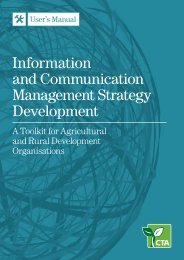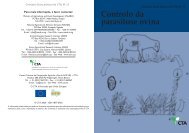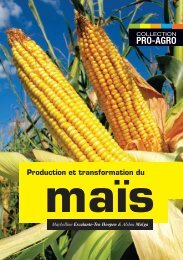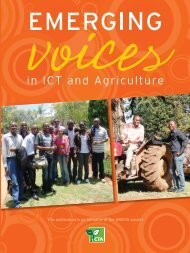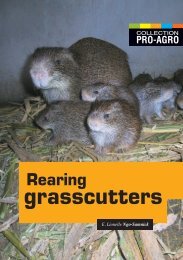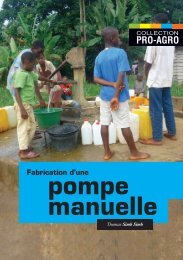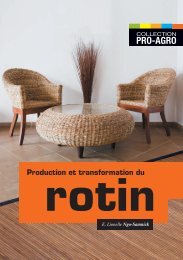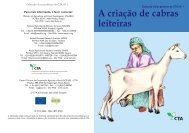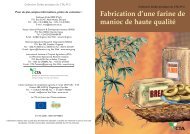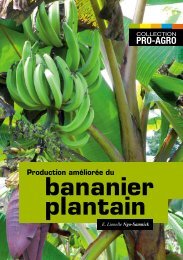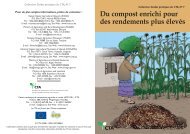Policy framework for Pastoralism in Africa
Policy framework for Pastoralism in Africa
Policy framework for Pastoralism in Africa
- No tags were found...
Create successful ePaper yourself
Turn your PDF publications into a flip-book with our unique Google optimized e-Paper software.
i) Climate changePastoralist production systems evolved over generations as a response to marked ra<strong>in</strong>fall variability,and used the ma<strong>in</strong> strategy of mobility to access limited water and graz<strong>in</strong>g resources <strong>in</strong> large ecosystems.Additional strategies <strong>in</strong>cluded the rear<strong>in</strong>g of different livestock species, to utilize different typesof vegetation and because each species has different water<strong>in</strong>g requirements. Decades be<strong>for</strong>e climatechange was recognized as a global phenomenon, pastoralists selectively bred their livestock to emphasizetraits such as drought resistance and milk production. They also altered the species compositionof their herds <strong>in</strong> the face of ra<strong>in</strong>fall and other trends, such as market opportunities. <strong>Pastoralism</strong>adapted to drier periods and wetter periods, to changes <strong>in</strong> disease risks, and to conflict.In <strong>Africa</strong>, assessments of climate change are themselves highly variable, with different assessmentspredict<strong>in</strong>g very different climate scenarios and related outcomes. For pastoralist areas, weathersystems <strong>in</strong> West <strong>Africa</strong> and the Sahel depend on different systems to those <strong>in</strong> East <strong>Africa</strong>, mean<strong>in</strong>gthat is difficult to generalize about climate change and pastoralism <strong>in</strong> <strong>Africa</strong>. Furthermore, whilesome analysts claim that drought is worsen<strong>in</strong>g <strong>in</strong> pastoralist areas, it is also important to dist<strong>in</strong>guishbetween drought as def<strong>in</strong>ed by ra<strong>in</strong>fall, and drought as def<strong>in</strong>ed by its impact on human livelihoods.Where consensus exists, it is more on the <strong>in</strong>creas<strong>in</strong>g impact of drought on pastoralists which <strong>in</strong>turn, can be expla<strong>in</strong>ed by <strong>in</strong>creas<strong>in</strong>g human population, decreas<strong>in</strong>g livestock hold<strong>in</strong>g among poorerherders, and decl<strong>in</strong><strong>in</strong>g access to productive rangeland.At policy level, it is important to recognize the considerable adaptability of pastoralism if pastoralistsare enabled to practice mobile livestock production, which <strong>in</strong> turns, means security of accessto sufficient rangelands. In the event of either drier or wetter, conditions, pastoralists will adjustherd composition and migrations. More speculatively, policy should support research and understand<strong>in</strong>gamong stakeholders on role of pastoral rangelands <strong>in</strong> carbon sequestration, and the possibilities<strong>for</strong> carbon trad<strong>in</strong>g if pastoral areas are conserved and managed with this outcome <strong>in</strong> m<strong>in</strong>d.Secur<strong>in</strong>g, Protect<strong>in</strong>g and Improv<strong>in</strong>g the Lives, Livelihoods and Rights of Pastoralist Communities29




